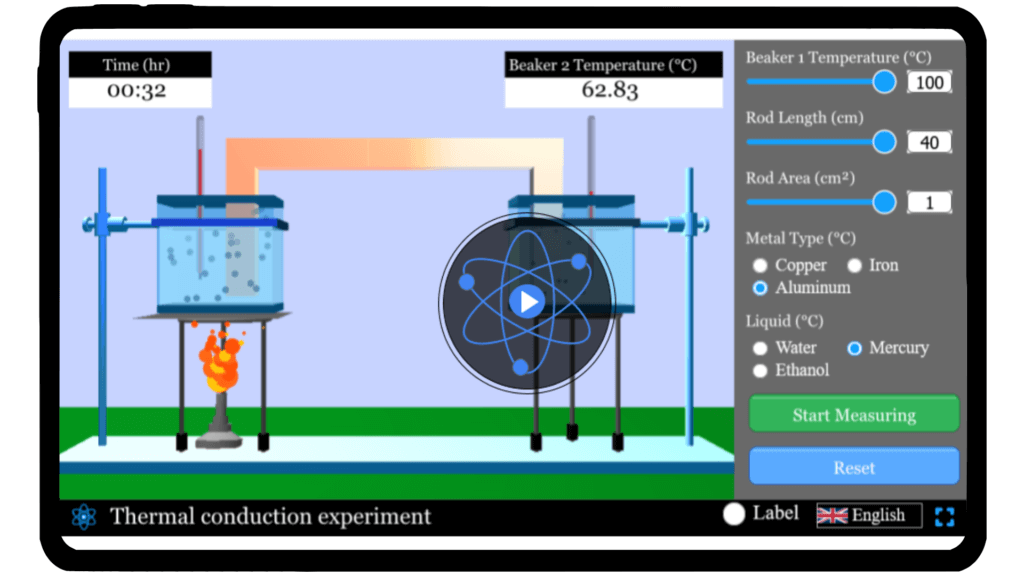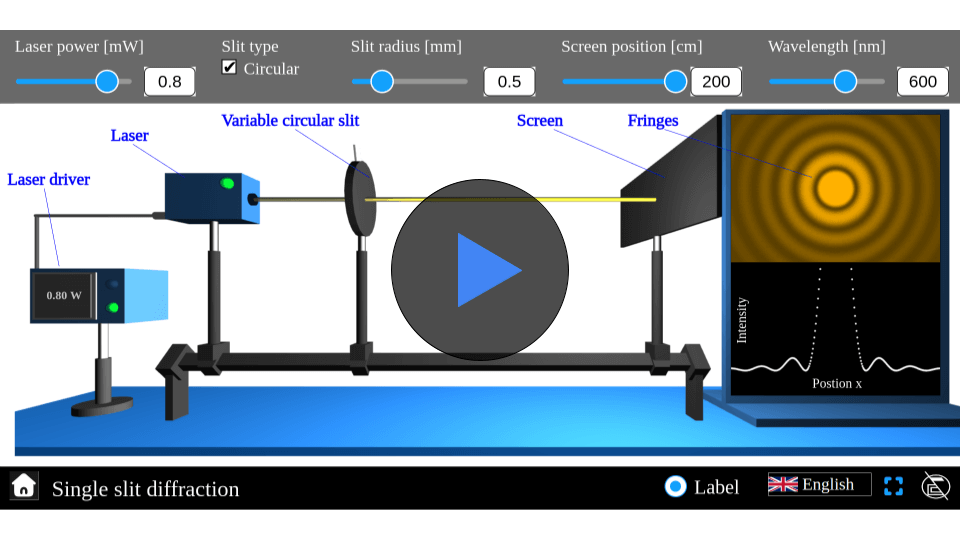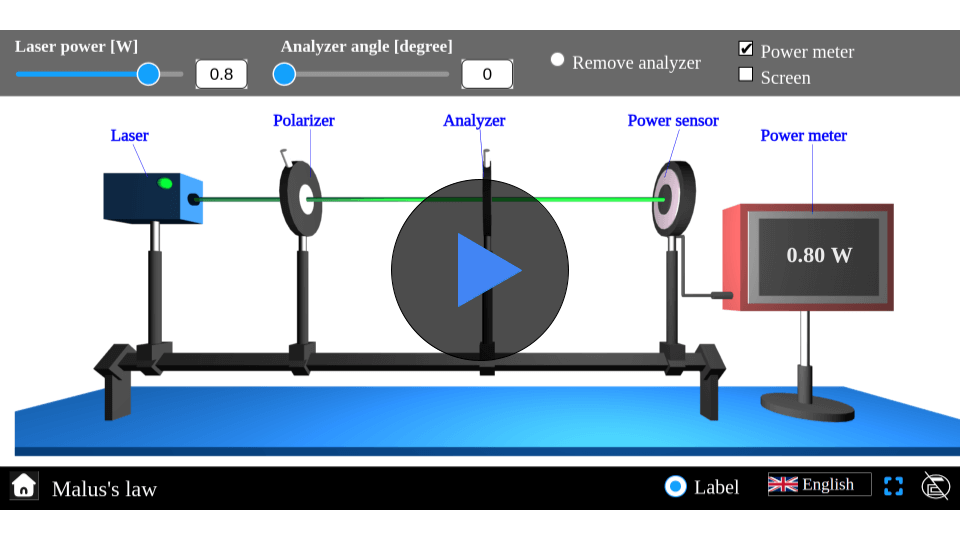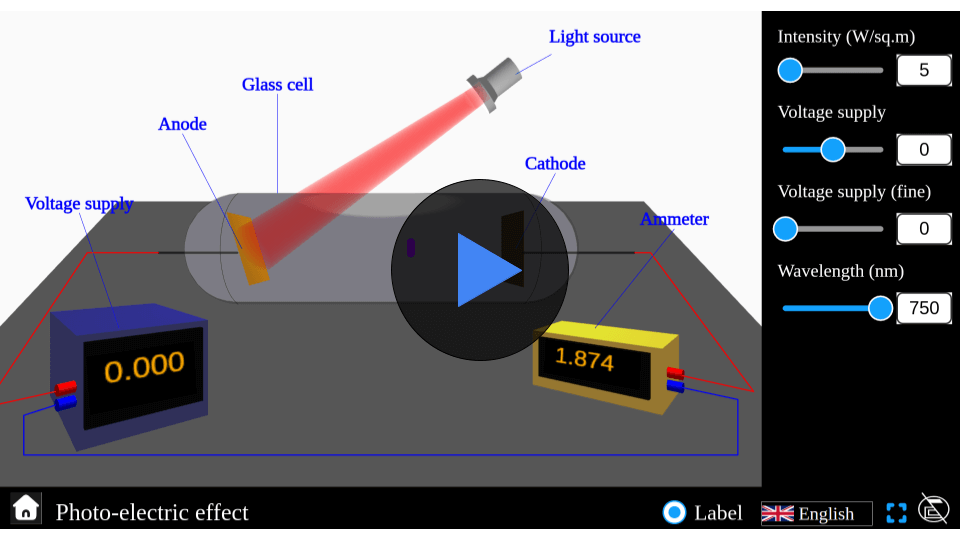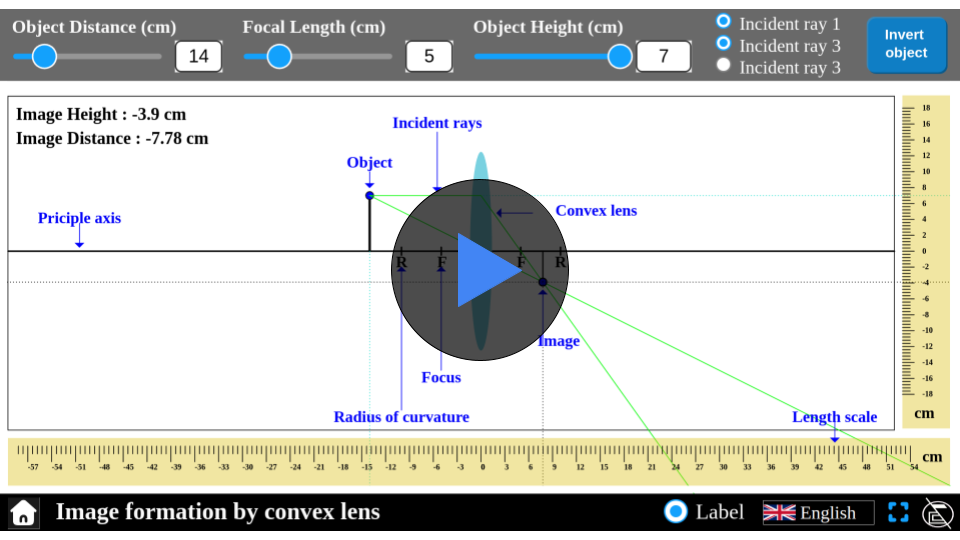Thermal conductivity Simulator
Explore the principles of thermal conduction and investigate how heat flows through different metals and liquids. Adjust rod materials, dimensions, and liquid properties to visualize temperature changes in real time using our interactive simulator.
Thermal conductivity
Physics surrounds us, shaping how energy moves through the world around us, often in ways we don’t notice. Have you ever wondered how heat travels through metals or liquids? This flow of energy, governed by the principles of thermal conduction, can be explored and visualized with our interactive simulator. Adjust metal types, rod dimensions, and liquid properties to observe how temperature changes over time, and uncover the science behind heat transfer. Start your journey into the fascinating world of thermal conductivity — experiment and visualize heat flow today!
\( \begin{align}
T_2(t) &= T_1 – \big(T_1 – T_{2}\big)\,e^{-\tfrac{tkA}{m_2 c L}}
\end{align} \)
Mathematical description
where:
- \( T_2(t) \) is the temperature of the object being heated at time t (°C or K)
- \( T_1 \) is the temperature of the heat source / hot side (°C or K)
- \( T_{20} \) is the initial temperature of the object at t = 0 (°C or K)
- \( t \) is the time elapsed since heating started (s)
- \( k \) is the thermal conductivity of the material (W/m·K)
- \( A \) is the cross-sectional area through which heat flows (m²)
- \( L \) is the thickness or length of the material in the direction of heat flow (m)
- \( m_2 \) is the mass of the object being heated (kg)
- \( c \) is the specific heat capacity of the object’s material (J/kg·K)
FAQs on thermal conduction
Qus 1. What is thermal conductivity?
Thermal conductivity is a property of a material that measures its ability to conduct heat. Materials with high thermal conductivity, like metals, transfer heat quickly, while insulators like wood or air transfer heat slowly.
Qus 2. What is the principle of thermal conduction?
The principle of thermal conduction states that heat flows from a region of higher temperature to a region of lower temperature within a material until thermal equilibrium is reached. Fourier’s law mathematically describes this heat transfer.
Qus 3. Which factors affect thermal conductivity?
Material type: Metals have higher conductivity than non-metals.
Temperature difference: Greater difference increases heat flow.
Cross-sectional area: Larger area allows more heat transfer.
Length of the material: Longer materials slow down heat transfer.
Density and structure: Porous or composite materials may reduce conductivity.
Qus 4. What are examples of high and low thermal conductivity materials?
High: Copper, aluminum, silver, gold
Low: Wood, rubber, glass, air
Qus 5. Why is thermal conductivity important in everyday life?
Designing heat sinks for electronics.
Building insulation for energy efficiency.
Cooking utensils to distribute heat evenly.
Aerospace and automotive applications to manage heat.
Qus 6. How is thermal conductivity measured?
Thermal conductivity is measured using techniques like the steady-state method (e.g., using rods with known temperature differences) or transient methods (e.g., laser flash or hot-wire method).
Qus 7. What is the difference between thermal conduction, convection, and radiation?
Conduction: Heat transfer through direct contact of particles in a solid.
Convection: Heat transfer through fluid motion.
Radiation: Heat transfer through electromagnetic waves, without a medium.
Qus 8. Can thermal conductivity change with temperature?
Yes, most materials show changes in conductivity with temperature. Metals usually decrease in conductivity with rising temperature, while some insulators may increase slightly.
Qus 9. What are the real-world applications of thermal conductivity?
Electronics cooling and heat management
Building insulation and HVAC design
Cooking and food processing
Industrial furnaces and heat exchangers
Aerospace and automotive thermal control
